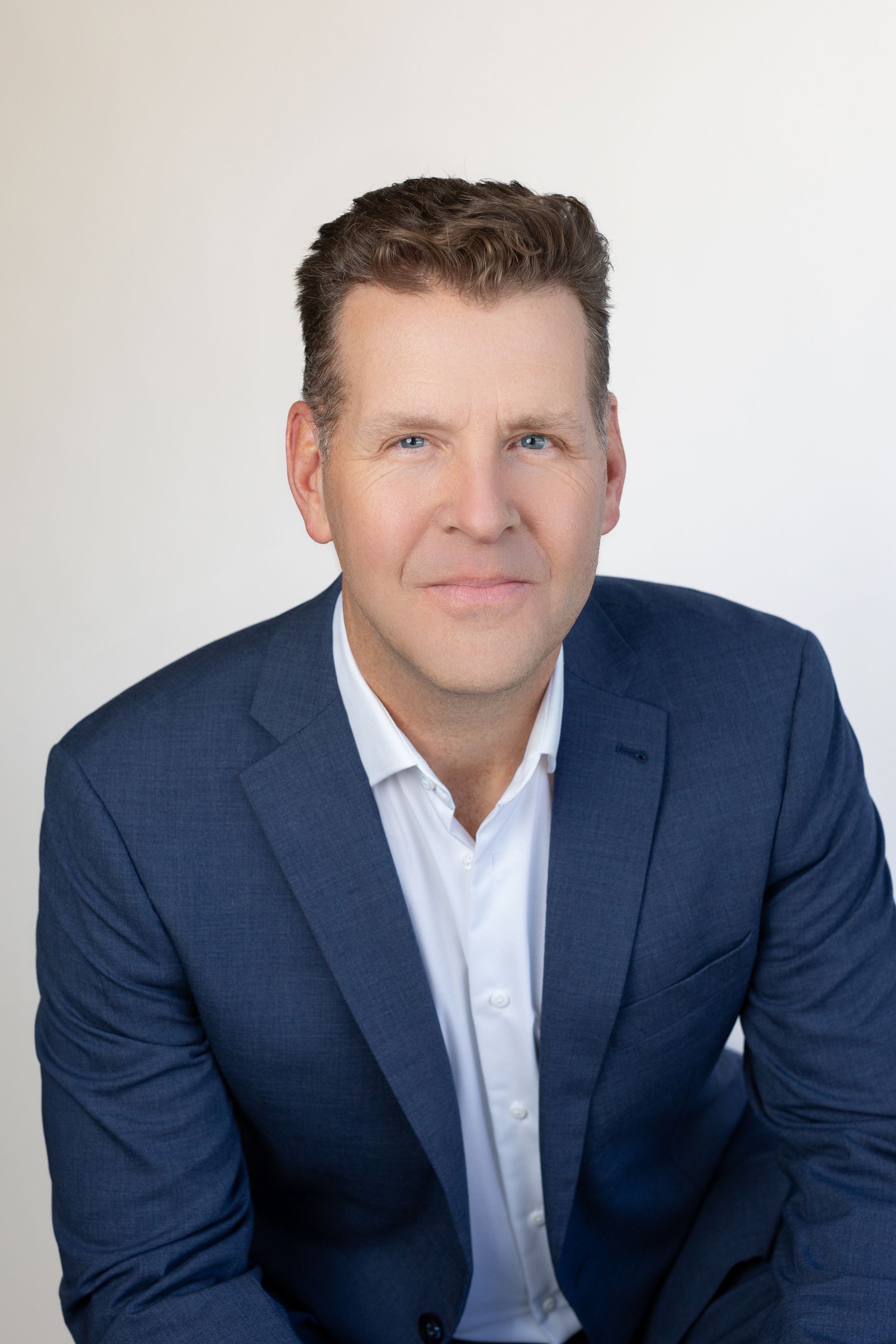Beyond the Urgency Trap: How Leaders Build Organizational Resilience That Lasts
ARTICLE HIGHLIGHTS
Building Organizational Resilience Beyond Constant Firefighting
If your leadership team constantly battles fires instead of building for the future, you're not alone. Many leaders describe their days as an endless sprint between quarterly pressures and operational crises—postponing the organizational capability building that would prevent the next crisis.
Like athletes who fail to train between competitions, organizations lose strength when they’re perpetually reacting. The true cost becomes apparent when competitors manage similar disruptions with greater ease and better results.
The goal isn’t to eliminate urgency—it’s to build the resilience to keep moving strategically while navigating disruption. That requires three key practices:
- Strategic focus to align and simplify priorities
- Capability building through intentional leadership development
- Structured rhythms to reinforce alignment and learning
Leadership teams that model these practices don’t just survive disruption—they use it to gain a competitive advantage.
The Culture and Costs of Chronic Urgency
Why Leaders Feel Overwhelmed By Constant Firefighting
If your leadership team constantly battles fires instead of building for the future, you're not alone.
Many senior leaders I work with describe their days as a blur of meetings, messages, and constant motion. They’re running from one urgent matter to the next—quarterly goals, market shifts, personnel changes, customer escalations. Urgency has become the default operating system. Leadership has begun to feel less like a marathon and more like an endless sprint.
This urgency addiction is deceptive. It provides a sense of momentum and control. But the deeper costs—fragmented focus, burned-out teams, and weakened alignment—undermine the very systems needed for long-term performance.
When everything is urgent, nothing is strategic.
I've seen leadership teams exhaust themselves treating every issue as an emergency. I've witnessed change agents burn out when organizational resilience becomes secondary to more immediate demands. Eighteen months later, those same organizations wonder why competitors handle disruptions with less chaos and better results.
The Hidden Cost of Chronic Urgency
Chronic urgency isn’t just a scheduling issue—it’s a strategic erosion that depletes organizational capacity. It pulls leaders into short-term execution at the cost of long-term capability. Organizations caught in constant urgency spend more time reacting than directing. Strategic priorities get diluted. Reflection becomes a luxury. Leadership development and alignment fall to the margins.
Chronic urgency depletes organizational strategic capability.
Like overtrained athletes without recovery, organizations operating under constant pressure begin to break down:
- Focus erodes. Every initiative feels urgent; none feel clear.
- Energy scatters. Too many priorities stretch teams thin.
- Execution weakens. Fatigue and chaos replace alignment and clarity.
The problem isn’t that leaders don’t care about strategy, development, or alignment—they do. However, in the whirlwind of urgent demands, the important work gets displaced. Reflection becomes a luxury. Growth becomes a future project. Strategic planning and alignment get postponed. When organizations are always racing, they deplete the very systems—organizational and personal—that make sustained performance possible.
The Result: Even strong strategies collapse when organizational capacity is depleted.
What Leaders Can Do to Fight Chronic Urgency
To move from firefighting to strategic resilience, leaders must shift how they lead and structure their organizations.
That shift starts with three critical practices, which we’ll explore:
- Strategic focus to align and simplify priorities
- Capability building through intentional leadership development
- Structured rhythms to reinforce alignment and learning

Strategic Focus: Aligning Priorities and Energy
Focus isn’t a personality trait—it’s a leadership capability that can be developed and scaled across organizations. Like any skill, it requires intentional practice: consistently returning attention to strategic priorities, again and again, even when urgent distractions arise. When leadership teams develop strategic focus, they create the bandwidth for sustainable performance.
Practices That Build Strategic Focus
Leaders who train their organizations to develop focus treat every distraction as strategic data—building organizational resilience by distinguishing between genuine priorities from the noise.
Leaders must help their teams by:
- Starting with priorities, not problems. Anchor meetings in strategic objectives.
- Simplifying metrics. Track fewer indicators that drive true outcomes.
- Protecting strategic time. Block space for strategy, not just operations.
- Modelling focused leadership. When leaders stay focused, teams do too.
Strategic focus transforms distractions into data.
The Result:
Organizations that develop strategic focus gain clarity, coherence, and energy. They stop mistaking busyness for progress and start aligning action to purpose.
Alignment Multiplies Focus: Doing Less, Better
Most organizations don’t fail for lack of effort or intelligence. They fail because energy gets scattered across too many competing priorities, depleting leadership bandwidth and team capacity. Every quarter brings new projects, new initiatives, and new “must-win” goals. The result? A slow erosion of focus that undermines sustainable performance. Teams become overloaded and disconnected. Leaders mistake busyness for progress.
Alignment isn’t consensus or agreement–it’s everyone aiming in the same direction. Alignment means shared purpose, goal transparency, and collective accountability. Strong alignment is the strategic focus multiplier: fewer priorities, better results, and stronger adaptation. It creates organizational coherence that reduces noise, strengthens cross-functional trust, and channels collective energy and resources toward measurable outcomes.
Alignment multiplies clear strategies into great execution.
The Result:
Organizations with stronger alignment achieve more with fewer initiatives, adapt faster, and sustain performance under pressure.
Leadership Development: Building Organizational Capability
Strategic focus tells you where to aim—but without leadership capability, you're aiming at targets you can't reach. Organizational capability is like muscle—it weakens without use and grows with consistent challenge. The quality of leadership directly determines organizational resilience, adaptation speed, and execution effectiveness.
Development isn't overhead—it's infrastructure.
What Leadership Development Actually Builds
Leadership development creates critical organizational capabilities:
- Navigation capability: Leaders gain the skills to guide their teams through complexity and ambiguity, making better decisions under pressure.
- Alignment capability: Leaders learn to align to a “north star” and build cross-functional collaboration, breaking down silos and improving coordination across the organization.
- Adaptation capability: Leaders develop the capacity to learn from both successes and setbacks, continuously improving performance.
These aren't abstract benefits. Research from the Center for Creative Leadership demonstrates that companies that protect leadership development during downturns consistently outperform competitors when markets recover. They move faster, collaborate more effectively, and execute strategic priorities with greater precision.
Organizational capability can't be outsourced, downloaded, or purchased—it must be developed.
How to Build Leadership Capability Systematically
Building organizational capability requires embedding developmental practices into business operations, including:
- Leadership reflection and strategic planning sessions that create space for leaders to step back and think strategically
- Structured learning from both successes and setbacks that turns experience into capability
- Cross-functional collaboration opportunities that build alignment and shared language across teams
- Intentional leadership development programs at multiple organizational levels, not just the executive suite
The World Economic Forum's report Risk Proof: A Framework for Building Organizational Resilience demonstrates that organizations investing systemically in capability building significantly outperform their peers. Companies with stronger resilience had survival rates nearly twice as high as those with weaker capabilities.
Why? They proactively built the internal capability to handle disruptions before they needed it.
The ultimate measure of leadership isn't tactical speed—it's strategic stamina.
The Result: Organizations with strong leadership capability don't just survive challenges—they emerge stronger and more competitive.
Structured Rhythm: Reinforcing Alignment Through Predictable Practice
Strategic focus and leadership capability are essential—but they need reinforcement. Without structured rhythms to sustain them, even the clearest priorities and strongest leaders drift under pressure.
Building a Structured Rhythm
A structured rhythm is the regular, predictable cadence of practices that keep organizations aligned and learning. Think of it as the organizational equivalent of an athlete's training schedule—you don't build strength randomly, but through consistent, scheduled practice.
High-performing organizations don't just set priorities once. They reinforce them over time through deliberate operating rhythms:
- Quarterly recalibration. Step back, check for drift, realign.
- Cross-functional coordination. Keep execution connected across teams.
- Leadership development cycles. Build skills through intentional programs.
- Structured reflection. Learn from both wins and setbacks.
These aren't bureaucratic requirements—they're how strategic priorities become embedded in daily operations. Resilience isn't built during crises; it's built between them through the muscle memory these rhythms create.
Resilience can't be outsourced or purchased—it must be built systematically through deliberate preparation and consistent practice.
The Result: Structured rhythms transform strategic intentions into operational reality. They create the consistency that allows organizations to sustain focus and alignment even under pressure.
Shifting From Chronic Urgency to Strategic Resilience
Urgency is inevitable. Firefighting will happen. But you get to choose whether your organization stays reactive—or builds the capacity to respond strategically.
Strategic focus, long-term capability building, and structured rhythm aren’t optional extras. They are the foundation strategy—the one that makes every other strategy executable.
You can't eliminate external pressures and urgent demands. But you can develop your internal capability to handle them with strategic clarity, operational balance, and coordinated action—enabling sustainable performance under pressure.
Leading the Rebuild: Three Strategic Actions for Senior Leaders to Activate Each Capability
- Conduct a Strategic Priority Audit. Identify all active initiatives across your organization. Then apply this filter: which ones directly advance our core strategic objectives? Which can be delayed? Which should be stopped entirely? Organizational resilience begins by reducing competing priorities that fragment leadership attention and team energy—freeing up resources and focus for sustainable performance.
- Protect and Invest in Leadership Development. Reserve dedicated time, budget, and executive attention for leadership capability building. Treat this as critical operating infrastructure that enables all other business outcomes–not optional overhead that gets cut when pressure increases. When markets tighten and pressure increases, protect these investments. Organizations that maintain leadership development during downturns consistently outperform competitors when conditions improve—they've built the capability to move faster and execute better when it matters most.
- Establish Operating Rhythms. Create regular touchpoints for strategic recalibration, quarterly leadership alignment sessions, cross-functional coordination meetings, and structured reflection periods. Build spaces for reflection and shared direction. Strong alignment emerges through consistent practice, not one-time announcements. Demonstrate sustainable intensity rather than unsustainable urgency. Celebrate strategic preparation as much as tactical performance. Leadership’s pace and focus patterns set the organizational rhythm for everyone else.
When leadership teams consistently implement these practices, organizational alignment shifts from something you command to something that becomes embedded in how the organization naturally operates. It becomes your organizational culture.
Leadership isn’t about winning every urgent battle–it’s about creating the organizational resilience and capability to compete consistently over time. By developing the strategic capabilities of focus, systemic leadership development, and structured operating rhythms, leaders ensure their organizations don’t just survive the next challenge—they emerge stronger and more competitive through sustainable performance.
Strategic resilience doesn’t happen by accident. It requires deliberate action by leaders.






